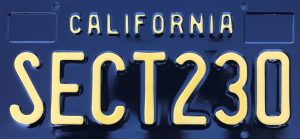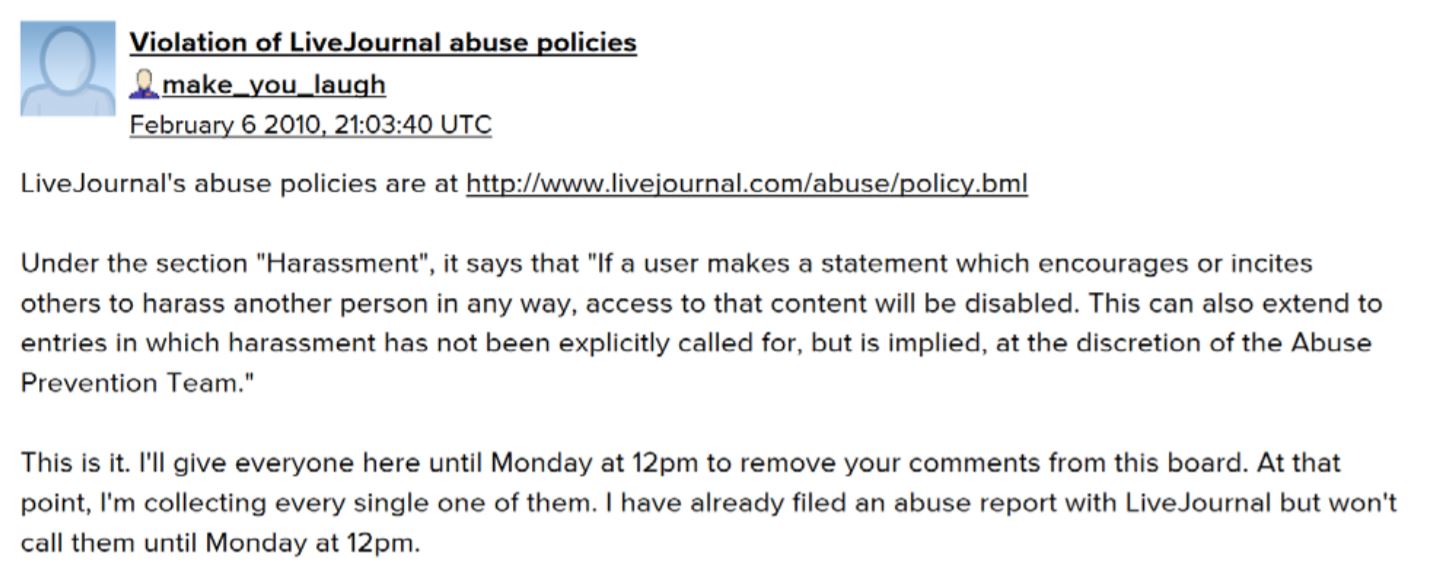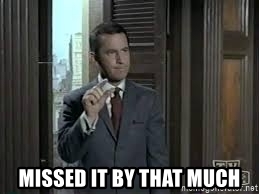First Circuit Says Mirroring Qualifies for Section 230–Monsarrat v. Newman
I previously blogged this case last year. I summarized the facts:
This case involves a LiveJournal community (the Davis Square community for Somerville, MA). In 2017, LiveJournal changed its policies. In response, Newman, the community moderator, copied all of the community’s posts and uploaded them to Dreamwidth–an action we used to call “mirroring” in the old days. Monsarrat had posted to the LiveJournal community and objected to the transfer.
The district court ruled for Newman, and the First Circuit affirms.
Some of the mirrored content allegedly defamed Monsarrat. Newman qualifies for Section 230 for those third-party comments:
ICS User. Monsarrat admitted.
Third-party Content. “Newman did not create the original allegedly defamatory posts on LiveJournal…Newman copied the allegedly defamatory posts from LiveJournal to Dreamwidth verbatim. He did not encourage or compel the original authors to produce the libelous information. And, in the manner and form of republishing the posts, he neither offered nor implied any view of his own about the posts. In short, Newman did nothing to contribute to the posts’ unlawfulness beyond displaying them on the new Dreamwidth website.”
Plaintiffs might draw negative implications from this passage to claim that Section 230 might not apply when the defendant “encouraged or compelled” the libelous content or “offered or implied” any personal views about it. Though written breezily, I don’t think the court is saying anything new here; the encouraged/compelled verbs refer to the Roommates.com standard and the “offered/implied” verbs simply indicate that first-party content isn’t covered by Section 230. It would have been better if the court hadn’t given plaintiffs the option to draw these inferences, but it didn’t create any new play for plaintiffs.
Newman’s mechanical act of mirroring to the new site didn’t change this analysis. The court agrees with the Ninth Circuit’s Kimzey v. Yelp, which said “[P]roliferation and dissemination of content does not equal creation or development of content.” Other cites the court could have made: Phan v. Pham, Barrett v. Rosenthal, and D’Alonzo v. Truscello; but see the yearbook cases.
Publisher/Speaker Claim. “Monsarrat’s complaint expressly seeks to make Newman liable for ‘publish[ing] on Dreamwidth’ the allegedly defamatory material….Newman’s decision to move user posts from LiveJournal to Dreamwidth naturally involved a decision about what content to publish on the new platform. ”
Copyright
At issue is this post by Monsarrat in the mirrored archive:
Remarkably, the Copyright Office registered a copyright in the post, even though the only original materials are the four sentences in the final paragraph and it’s basically a demand letter. Nevertheless, the registration is worthless because Newman qualifies for fair use.
The court notes that a motion to dismiss “generally provides an unaccommodating vehicle for adjudicating fair use” because it’s an affirmative defense and often fact-dependent. Nevertheless, this case is an exception: “Simply by looking at the copyrighted work, its purpose as alleged in the complaint, and what Monsarrat concedes to be the circumstances and nature of its copying, we can see no plausible argument that Newman has not established fair use.”
Nature of Use. “Newman’s purpose is noncommercial and at least marginally transformative.” (Surprisingly, no cites to Google v. Oracle).
- “Monsarrat’s goal in authoring his short, time-sensitive work was plainly to encourage users in 2010 to immediately stop harassing him…Monsarrat cannot claim with a straight face that Newman’s copying — seven years later and on a different platform — was aimed at the same purpose. So, while we cannot be sure, given the present record, about the extent to which Newman’s work is transformative, it is at least minimally so.”
- Monsarrat repeatedly conceded “that the copyrighted work has no commercial value…Monsarrat does not claim that Newman reproduced his copyrighted post to accrue any profit — financial or otherwise — nor is there any indication of such a benefit.”
- Monsarrat argued Newman had bad faith because the real goal of mirroring was to defame Monsarrat, but the court says the complaint’s allegations on this point weren’t sufficiently credible.
Nature of the Work. This work is on the fact/information side because the post contained a blockquote of third-party material and “brief workaday prose informing other Davis Square LiveJournal users of Monsarrat’s threatened future actions.”
Amount Taken. Newman republished the entire work as part of the archive mirror, but “it would have made scant sense for Newman to take just part of the copyrighted post. Indeed, given that Newman faithfully duplicated the rest of the thread containing Monsarrat’s work, consisting of more than 400 comments, selectively copying over only a portion of Monsarrat’s post would have misrepresented what Monsarrat wrote.”
Market Effect. Monsarrat “expressly conceded at oral argument that there is no potential market for his work.” Monsarrat nevertheless insisted that his work had “inherent value” that was being denigrated. You can almost here the court rubbing its temples in response to this argument:
if we deemed that the mere copyright endows a work with intrinsic value sufficient to weigh significantly in the fair use analysis, such a value would be present in every case, and thus prove to be largely beside the point in differentiating one case from another
Unfortunately, the fair use jurisprudence is filled with circular arguments like the “inherent value” argument tried here. Fortunately, this panel didn’t take the bait.
Protip: C&Ds and demand letters may nominally look like copyrighted works, but the odds of being able to enforce those copyrights are so minimal that enforcement attempts usually deserve mocking.
* * *
Implications
Every time I see a copyright claim fail on a motion to dismiss due to fair use, I feel like the lower court should grant a 505 fee shift to the defense because the case obviously wasn’t close. A fee shift here also would be appropriate to deter future plaintiffs.
Mirroring like what Newman did is rare nowadays, but this ruling potentially has favorable implications for archiving, caching, and other forms of bulk storage.
Personnel note: though this lawsuit reads like a pro se case, Monsarrat was represented by a lawyer who’s appeared on this blog before. Richard Goren was the named plaintiff in Small Justice v. Xcentric. In that case, Goren was unhappy with negative Ripoff Reports critiquing him. Goren won a default judgment against the poster and then improperly got the state court to transfer the copyrights to the offending posts to him, which he then asserted against Ripoff Report. The First Circuit rejected the scheme, and Jessica Silbey and I excoriated the case in our Copyright’s Memory Hole paper. On the plus side, Goren can now claim some credit for creating two defense-favorable First Circuit published precedents on Section 230 and copyright. 🙏
Case citation: Monsarrat v. Newman, 2022 WL 714426 (1st Cir. March 10, 2022)



